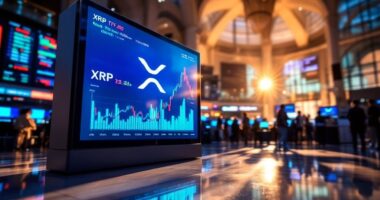In a definitive response to swirling rumors about XRP’s centralization, Ripple CTO David Schwartz clarified that the cryptocurrency has no issuer, setting the record straight in May 2025.
His explanation emphasized a fundamental difference between XRP and many other cryptocurrencies – its entire supply was created at the launch of the XRP Ledger, with no new tokens minted since.
Unlike Bitcoin’s approach (where miners are like gold prospectors slowly unearthing new coins), XRP showed up to the party with its full wardrobe already packed.
This distinction became particularly relevant after MMA star Conor McGregor’s tweet about potential US government cryptocurrency investments sparked fresh debates about centralization.
“Having visible leadership doesn’t make a cryptocurrency centralized,” Schwartz explained, drawing a clear line between Ripple as a company and XRP as a digital asset.
Leadership visibility doesn’t equal centralization. Ripple’s company structure exists separately from XRP’s decentralized nature.
It’s similar to how having a CEO of Ford doesn’t mean they control every car on the road – Brad Garlinghouse may lead Ripple, but that doesn’t equate to controlling XRP or its ledger.
The debate highlights a more nuanced understanding of decentralization.
Rather than viewing it as a binary label, Schwartz urged focusing on what decentralization actually protects against: censorship and single-party control.
XRP’s distribution model allowed anyone to claim tokens without the competitive mining process required by other cryptocurrencies.
Recent investigations have revealed dormant XRP wallets connected to Ripple’s co-founder, though these findings haven’t significantly altered the centralization debate.
Throughout the controversy, XRP maintained relative stability at approximately $2.22, with a market cap around $129.99 billion and modest volatility of 0.8%.
This steadiness suggested market confidence despite the centralization questions.
The industry’s response to Schwartz’s clarification was substantial, with cryptocurrency news outlets extensively covering his technical explanation.
The XRPL network boasts over 1,000 nodes worldwide with only 33 required for transaction validation, offering another compelling argument against centralization claims.
The discussion illuminated broader questions about decentralization criteria across the cryptocurrency landscape, demonstrating that in the complex world of digital assets, technical design often matters more than superficial comparisons. Schwartz further elaborated that the XRPL lacks rivalrous features that make other blockchains vulnerable to centralized control.









